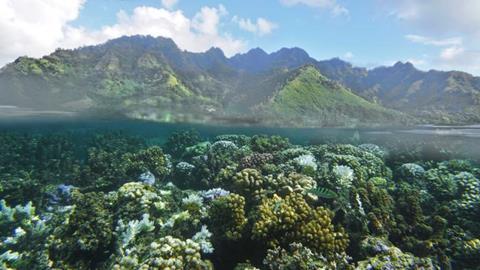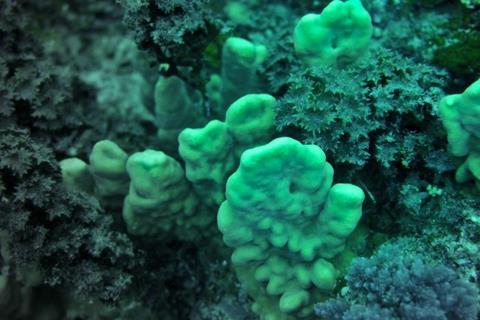A massive, multi-year scientific expedition led by researchers from the University of California, Santa Barbara and collaborating institutions, including the University of Hawai‘i (UH) at Mānoa, determined that land use on tropical islands can shape water quality in lagoons and that rainfall can be an important mediator for connections between land and lagoon waters. These findings provide vital information for ecosystem stewards facing global reef decline. Their findings were published recently in Limnology and Oceanography.

“This study is pretty groundbreaking in terms of its scale,” said Christian John, lead author of the study and postdoctoral scholar at the University of California, Santa Barbara. “We looked at algal tissue nutrients, water chemistry, and microbial communities at almost 200 sites around the island of Mo‘orea, French Polynesia, and we repeated this sampling over multiple years.”
READ MORE: Coral diseases and water quality play a key role for coral restoration and survival efforts
READ MORE: Reef pest feasts on cyanobacteria ‘sea sawdust’
“The links between land and sea are dynamic and complex, so it’s a topic that has remained elusive to science,” said Mary Donovan, co-author and faculty at the Hawai‘i Institute of Marine Biology in the UH Mānoa School of Ocean and Earth Science and Technology. “It took a dream team to pierce through that complexity. We brought together a group of interdisciplinary thinkers, from students to senior investigators, across at least five major institutions to tackle this immense challenge.”
Phase shift
Scientists have long been concerned that with an increase in human-associated inputs from land to a coral reef, there is often a “phase shift”—a decline in corals accompanied by an increase in harmful algae. This ecological shift is often linked to excessive nutrients and changes in the microbial community, but the precise connection between land use and coral reef health is poorly understood.
Through their investigation, the team found that nutrients in the lagoons off Mo‘orea were highest in concentration closer to the island, lower farther offshore, and associated with terrestrial input.
“This indicates that at least some of the nutrients in Mo‘orea’s lagoons are coming from land,” said John. “Additionally, we found that nutrients are higher in lagoon habitats that are downstream of heavily impacted watersheds. This tells us that human activities on land can play a large role in lagoon water quality, which is important for corals, fishes, and all of the other creatures that live in coral reef ecosystems.”
Rainfall is the mediator
The study also provides evidence that precipitation acts as a key mediator for the connections between land use and lagoon waters, potentially flushing more land-based nutrients to the lagoon and reef systems. This suggests that as climate change alters regional rainfall patterns, the impacts of terrestrial factors on coral reefs may also be affected.
For years, scientists have been using measurements of nutrient concentrations in algae tissue to understand how nutrients vary across a marine ecosystem. When analyzing alage in the recent study, the researchers found that algal nutrients reflected the chemistry of land-based inputs, especially near larger, human-impacted watersheds.

“This validates our use of this organism as a reliable, long-term bioindicator for nutrient pollution in the ecosystem,” said John. “So, we can be more confident that our nutrient proxy is a good measure of nutrients in the ecosystem.”
Informing stewardship efforts
“Gravity is a unifying force in ecology, and islands are always uphill from the coral reefs that surround them,” said John. “Everything that happens on land has the potential to impact things going on in the ocean.”
Across Pacific Island systems, the flow of nutrients from mountains to the ocean is a central focus for coastal resource management. Targeted strategies, such as reducing polluted runoff, developing buffers along rivers, or actively mitigating soil loss at development sites, can significantly dampen the adverse effects of land use on lagoon water quality.
“The ahupua‘a, land use divisions that connect mauka to makai, are central to watershed management here in Hawai‘i,” said Nyssa Silbiger, co-author and associate professor in the SOEST Department of Oceanography. “Understanding water quality is a fundamental challenge for everyone: it is key to assessing coral reef health and it is inseparable from human health.”
Topics
- Agricultural runoff and eutrophication
- Algae
- Asia & Oceania
- Christian John
- coral decline
- Early Career Research
- Ecology
- Healthy Land
- Marine Science
- Mary Donovan
- Nyssa Silbiger
- Ocean Sustainability
- Research News
- University of California, Santa Barbara
- University of Hawai‘i at Mānoa
- USA & Canada
- Wastewater & Sanitation







No comments yet